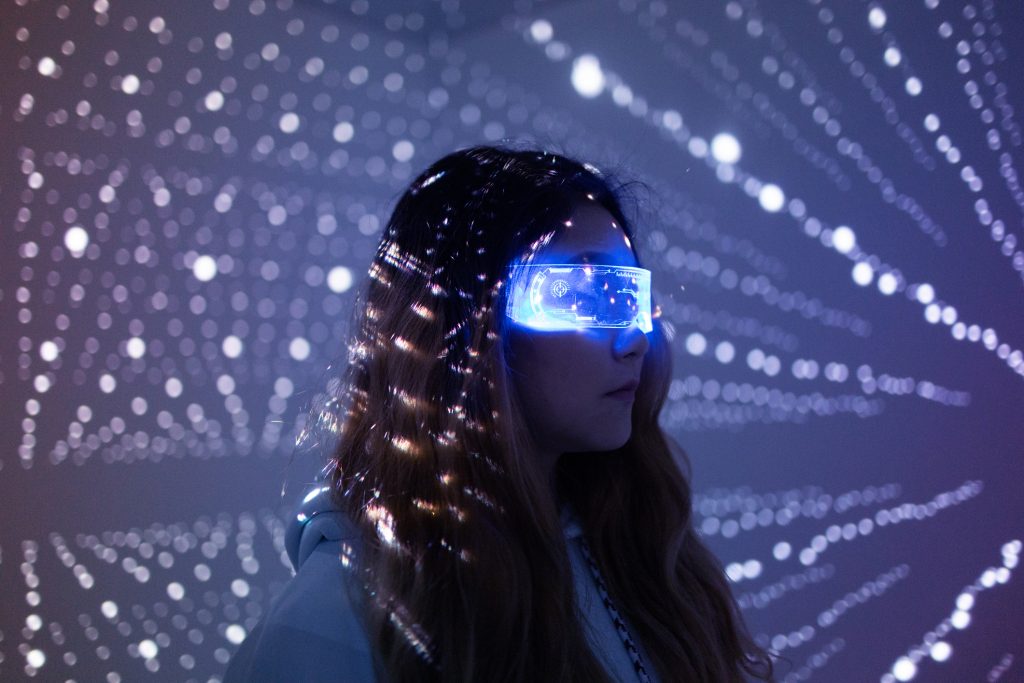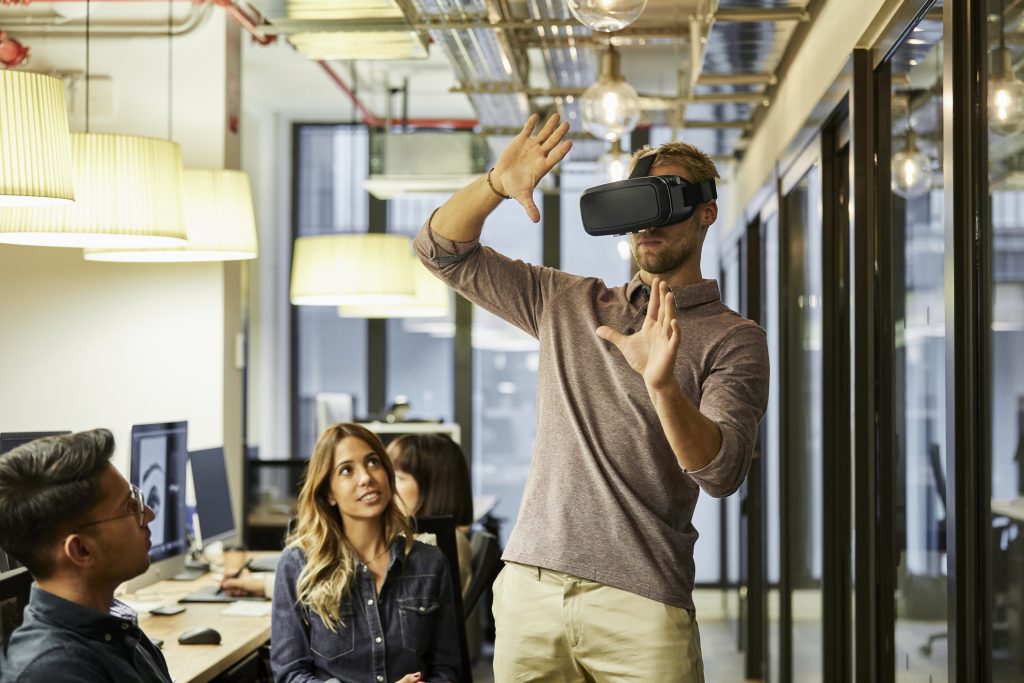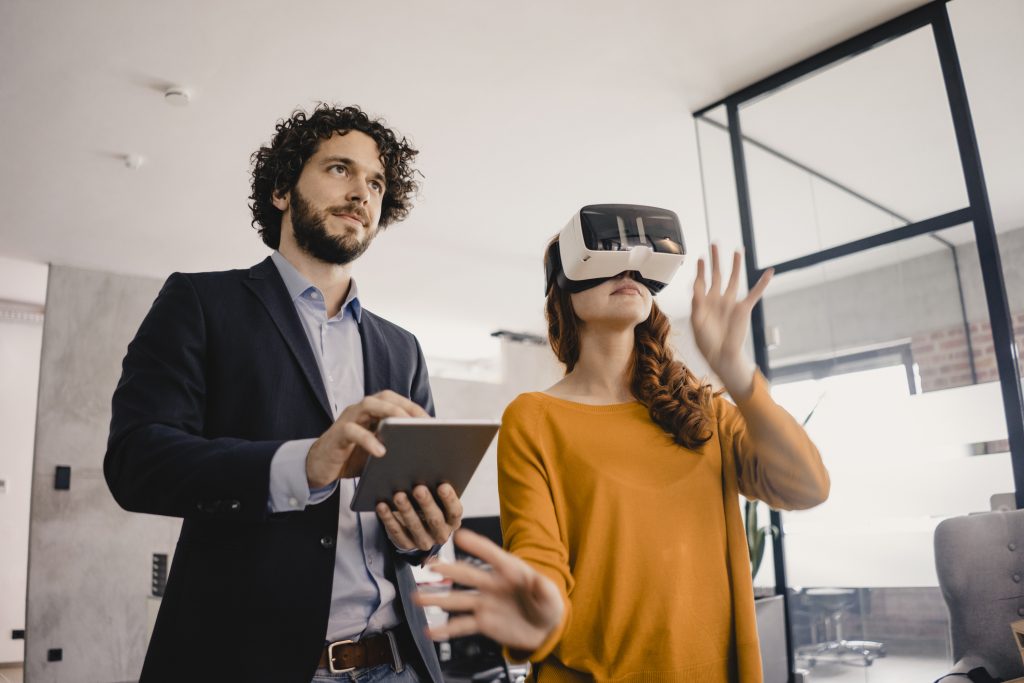In 2020 and 2021, Zoom, Webex, Microsoft Teams, and other collaboration platforms probably convinced you of the need for virtual reality in everyday interactions and professional development (PD) to help build your workforce.
But what if you really could deploy virtual reality (VR) and augmented reality (AR) professional development to your employees to give them “hands-on” experience with your company’s core operations? That scenario may not be too far off: VR and AR are on the leading edge as possibilities for PD, offering your workforce a virtual experience without bringing them back physically to the office, the hospital, the plant, etc.

“Anyone can pick up a VR headset from their local Walmart,” says Ohio University’s Charles P. (“Chip”) Linscott, PhD, Assistant Professor of Instruction, Associate Director of Undergraduate Studies in the J. Warren McClure School of Emerging Communication Technologies, and Audio Director of The GRID Lab at Ohio University. Linscott firmly believes VR and AR are accessible training sources for almost any company that wants to immerse its employees in the experience of day-to-day operations.
Ohio University’s GRID Lab (short for Games Research and Immersive Design) marries state-of-the-art training and education with outside resources to immerse students in the creative art of VR and AR experiences. But it’s not about games. The GRID Lab finds grants and other public funding for opportunities for students to work on actual training and education programs. Students get hands-on knowledge and skills to research and develop virtual, augmented, and mixed reality ideologies and technology to build real-world PD for a variety of industries.
Endless possibilities
The potential for VR/AR technologies is not just a pandemic-driven reaction for employers. Rather, it is the most promising example of how the immersive nature of VR/AR is the perfect way to present professional development to your employees.
Imagine if you had a library of immersive, interactive, and engaging PD courses to help employees ease into your team and allow them to experience the physical realities of your organization’s objectives, strategies, and goals. For example, healthcare facilities use VR/AR to show medical students what they’ll face in emergency rooms and elsewhere. VR/AR training is the next best thing to being there. Now imagine how you could decrease the learning curve for new hires with immersive VR/AR experiences that let them see themselves working and succeeding in their new position.

The concept is so promising that Ohio University excels in identifying outside funding for research development projects. Through grants and public funding, they’ve worked with the Department of Defense and Homeland Security and almost every major healthcare system in the state of Ohio. They’ve even worked with the Zuckerberg General Hospital in San Francisco.
Going virtual to build skills
The Ohio University GRID Lab doesn’t focus on VR/AR for commercial use. Instead, Linscott says, “The commonality has been to use emerging technologies to push the envelope and, with an emphasis on social conscience, to make the world a better place.”
The Harvard Business Review stated in early 2021 that companies are seeing a gap in skills for new recruits. Fifty-nine percent of hiring managers and 89 percent of executives surveyed reported problems hiring employees with soft skills. As most companies know, soft skills are becoming essential.
But how do you train a new hire on these skills when your workforce is remote? A VR/AR combination training helps you show employees an actual situation and how they’re expected to handle it. Professional development of this nature is hard to create, but virtual and augmented reality helps you address the situation with a hands-on experience for all employees. Think about your current PD construction. Without access to in-person training and development, what can you do to develop these vital skills?
Applications for nearly every industry
“It’s amazing how gaming and VR/AR help users learn and understand complex environments and unique situations,” said no parent ever. But the truth is, VR/AR can help learners grasp abstract concepts and gain hands-on experience in low-risk virtual scenarios. Let’s consider for a moment how your company can help your employees be more cognizant of what your customers are feeling. Now consider how instrumental that VR/AR training would be for introverted employees who don’t normally seek close, interpersonal interaction. With your VR/AR PD courses, you’ve just connected a new hire with the idea that he, she, or they can learn how best to respond in those situations. VR/AR gives your employees the confidence to react to any situation they may face.
Whether it’s through STEM courses, medical simulations, technical education, or arts and humanities projects — VR/AR PD courses help new employees and others in your organization get up to speed quickly.
Linscott believes nearly anyone can benefit from VR/AR development and training. “Everybody from social workers to police officers, doctors, nurses, audio production folks like me, coders, digital artists, cinematographers, screenwriters, theater, actors, and other professionals are coming at it from a different angle,” he says, “but the commonality is that they all work together on these different projects.”
The Ohio University GRID Lab recently created successful law enforcement training. “We focused on how law enforcement professionals can better handle mental health issues they may not be explicitly trained to handle,” Linscott says, “including racially charged issues.”

Final thoughts
In essence, you might feel you need a professional network to create a PD VR/AR training course. Not so, but you do need VR/AR professionals and a core team of subject matter experts. You likely have subject matter experts on your team, and the VR/AR team members may be located through a simple phone call to your local college or university VR/AR lab.
Your core team of subject matter experts, combined with VR/AR experts, means that you can create PD courses your employees enjoy and help them acquire new skills or learn your company culture easily and quickly. And it could be as easy as walking into your local Walmart to purchase a VR headset.
Ready to review your PD program? Start with a professional development survey template and learn more about what your team needs.






